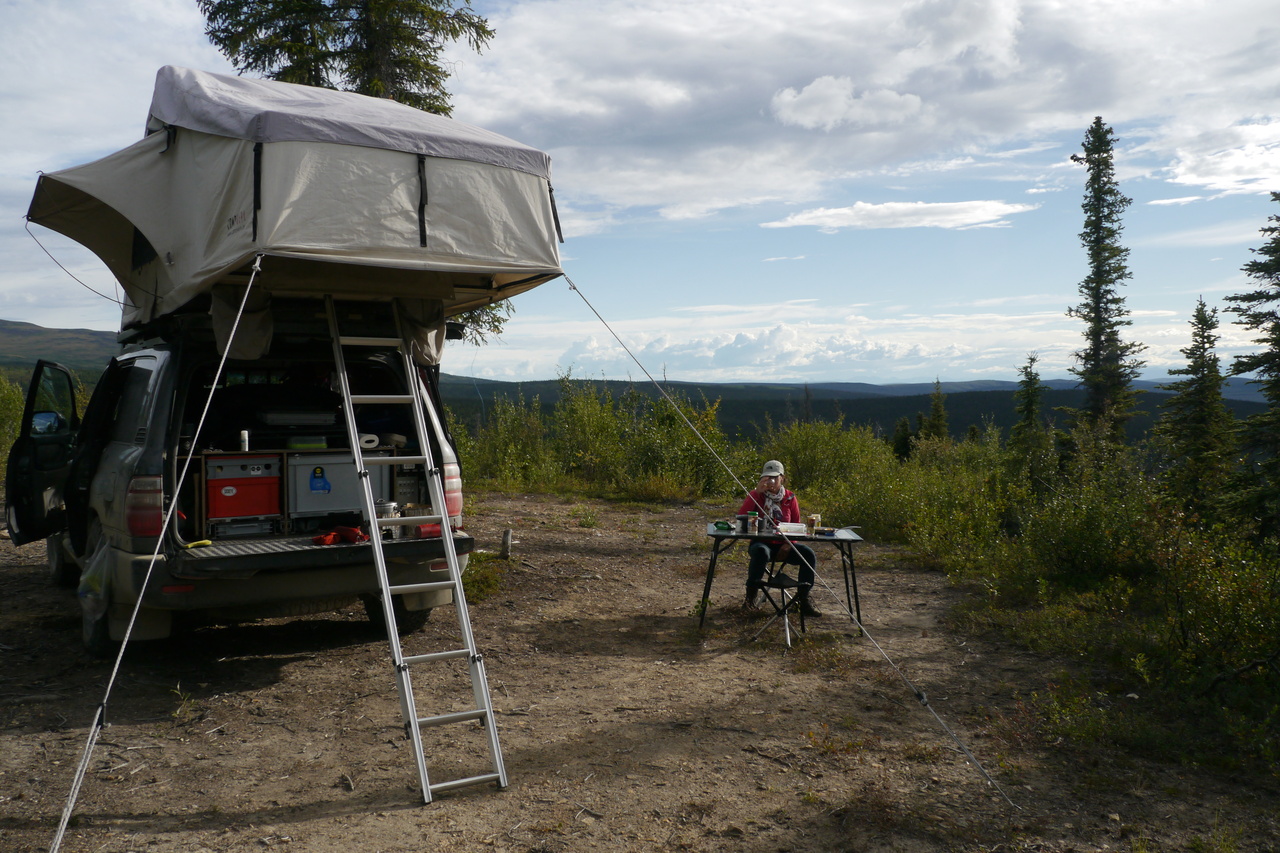Met 'The Beast' door Noord-Amerika
Our rooftop tent is destroyed!
The Beast (our car) is back in Europe. Unfortunately, the trip for our rooftop tent did not go without a hitch.
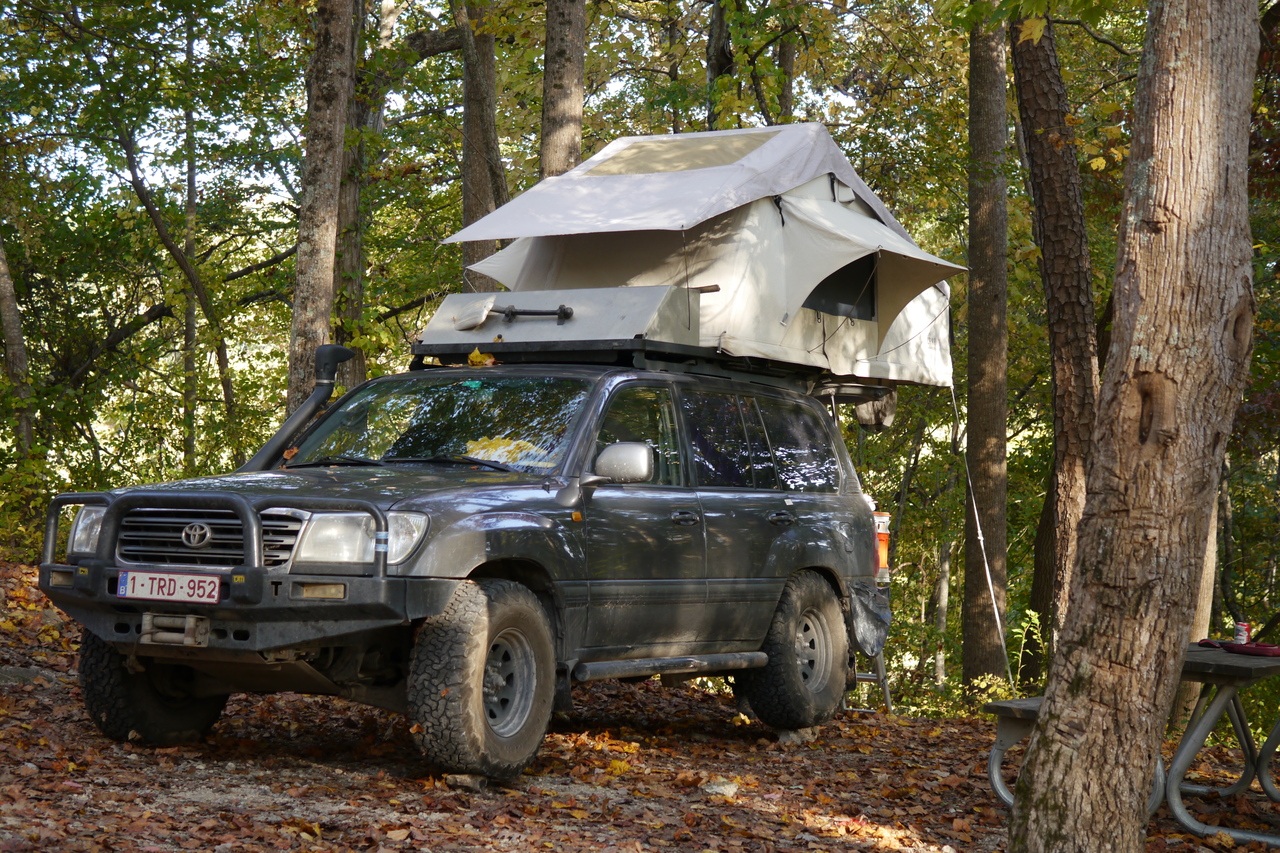
Quest for a tent
We wanted a tent on our roof, because sleeping in the limited space of a hefty car (in the tropics!) does not appeal to us. We started looking at different brands of rooftop tents. The market was led (in 2016) by Africans, probably due to the long safari tradition in that region.
The tent is, after the vehicle, the most important part of our equipment. A tent should protect you from the climate, keep you dry and provide a safe place where you can rest after exhausting travel days. Without a tent in Alaska, with summer night temperatures well below 10°C, you would quickly become hypothermic. A leaky or poorly ventilated tent will make your sleeping bag wet and thus unusable. In Brazil where not the temperature but a mosquito is a problem, expect the tent to be able to turn into a mosquito net, keeping you clear of Dengue, West Nile Disease and Chikungunya. One-third of your travel time is spent in your tent. Your tent should protect you well, in multiple ways.
During our test trip in South Africa, we slept in a rented Eezi-Awn (with a rental car underneath). A wooden floor, thick canvas, sturdy tubes and nice and dark inside. Easy to fix yourself, a bit of a lot of weight on your roof though. Too cold at night and when the sun shone on it became way too hot. During rain you can't get in dry: the ladder is in the rain. Your raincoat or wet clothes have to "go to bed": more condensation. This African was not going to be it.
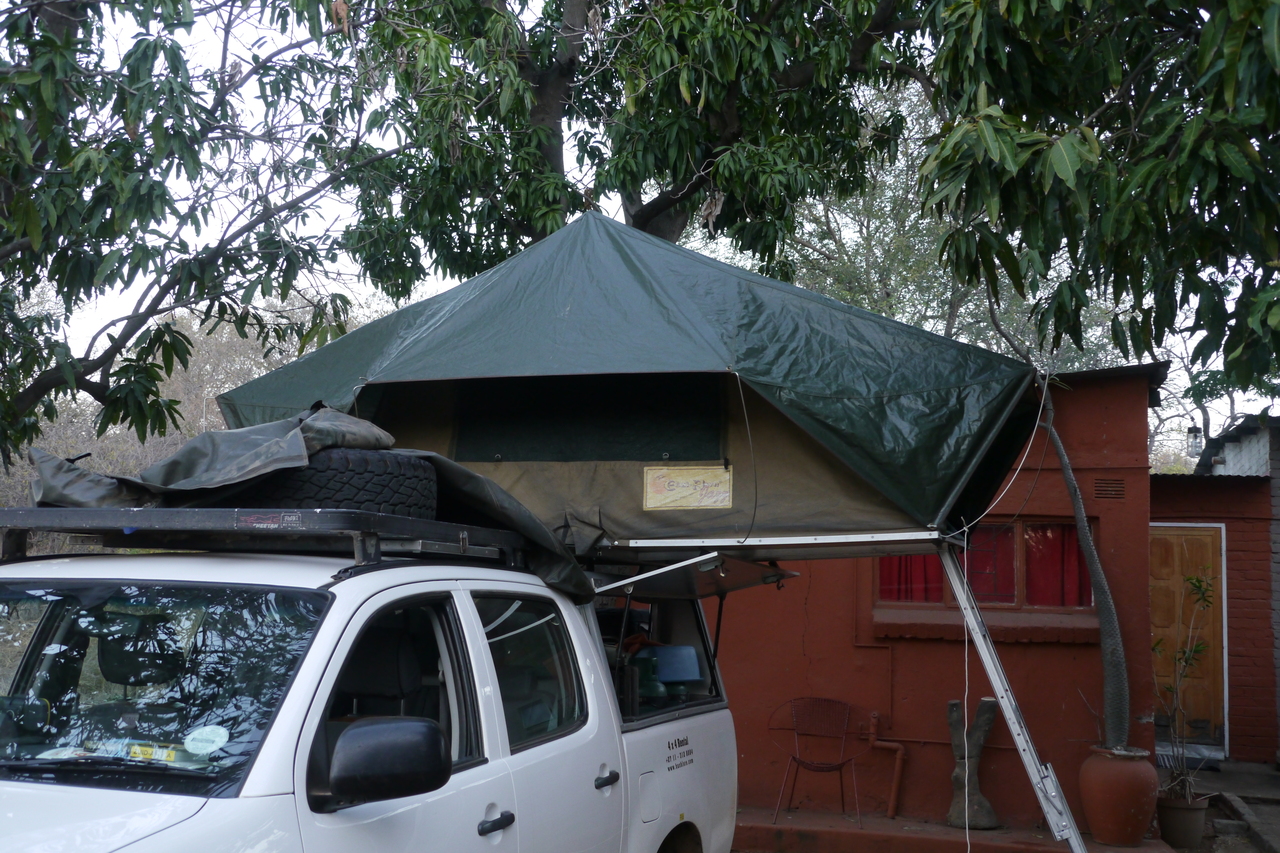
Everyone we encountered, we interrogated about their tent. Hannibal and Howling Moon were very similar to "our" rented tent, with the same drawbacks. An aluminum "hard-shell" (from Alu-Cab) had too small a bed, the ever-smeared stairs had to travel along on the bed, and travelers complained of condensation during the cold nights. And if that complex lifting mechanism broke down far from home....
During a long journey, "everything" breaks down. It wears out, it gets mishandled sometime or an accident happens to it. A tear caused by a fallen tree branch can become a huge problem. I was looking for a rooftop tent that I could take apart on the road: that way I would have that tear easily fixed by the next tailor. Ideally, I wanted parts that were simple and could also be found in semi-developing countries.
Back in Europe, we discovered Campwerk. Designed in Germany, made elsewhere (like almost everything else in the pre-Trump era). A folding tent with a synthetic bottom that weighs less and is insulating with a tent made of light gray material. And a skylight, so we could see the stars from our bed. That bed is 2m40 long, and then there will be a canopy that unfolds above the stairs. We also bought the friendly-priced accessories: a ventilation layer underneath the mattress and an inner tent. It was a new brand (to us), but fit our profile exactly.
Memories of our travel companion
We started in Uruguay, in early spring. Beautiful days, cold nights. After a few chilly nights, we took out the inner tent: what a difference! It stayed noticeably warmer inside and we could open up the outer tent a bit, so there was less condensation. Without the inner tent, we would have avoided spending the night on the Salar de Uyuni (a salt flat at about 3,500 meters in Bolivia). Thanks to our warm tent, we were able to sleep in this unique place (at -5°C).
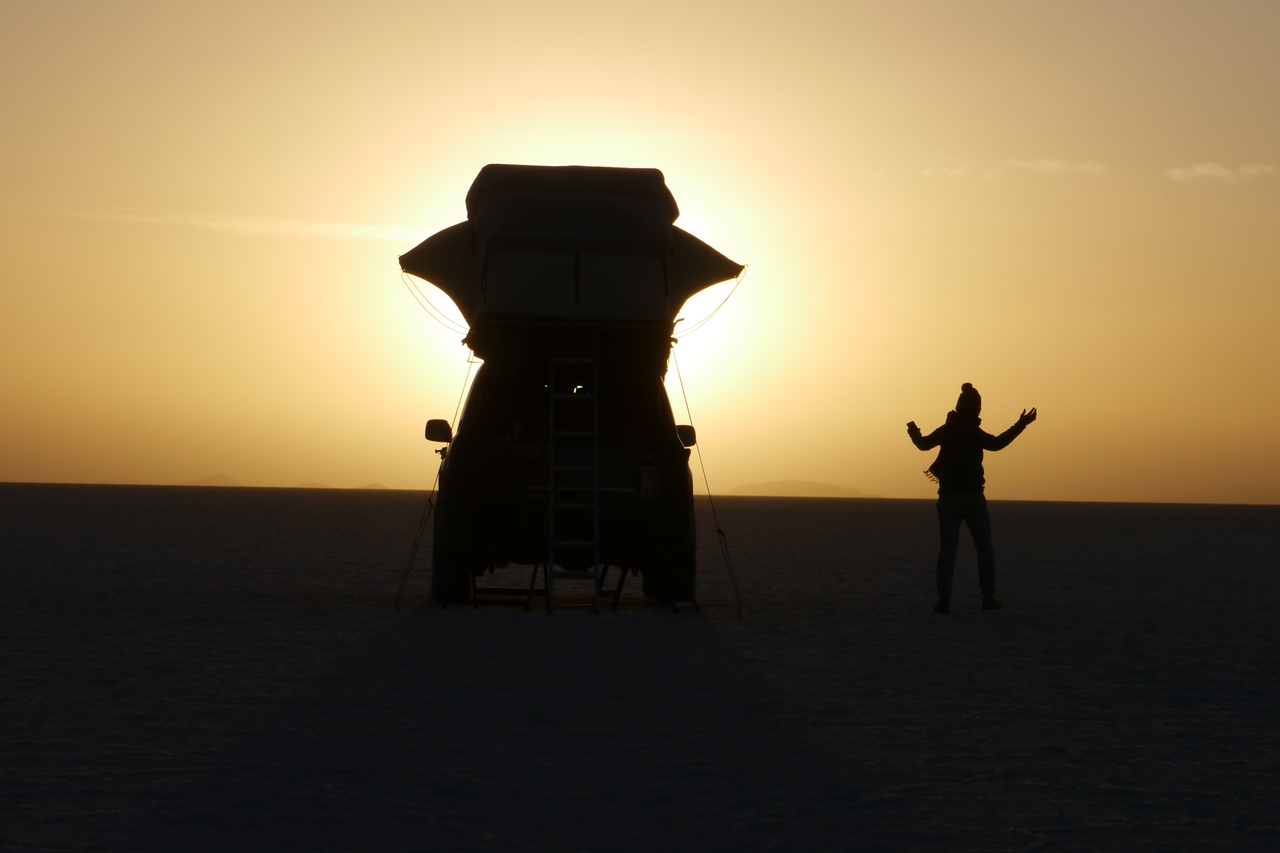
Along the Carratera Austral (southern Chile), it rains a lot (and hard!). Making a morning cup of coffee under that canopy above the stairs provides a good start, even to rainy days. The side awnings allow the tent to ventilate even in the pouring rain. The inside stays dry enough to leave sleeping bags. Because of the rain, the exterior is obviously not dry when you leave. By zipping "everything" up, that rainwater stays on the outside: the fabric doesn't let the water through, not even folded up, even after a day of driving.
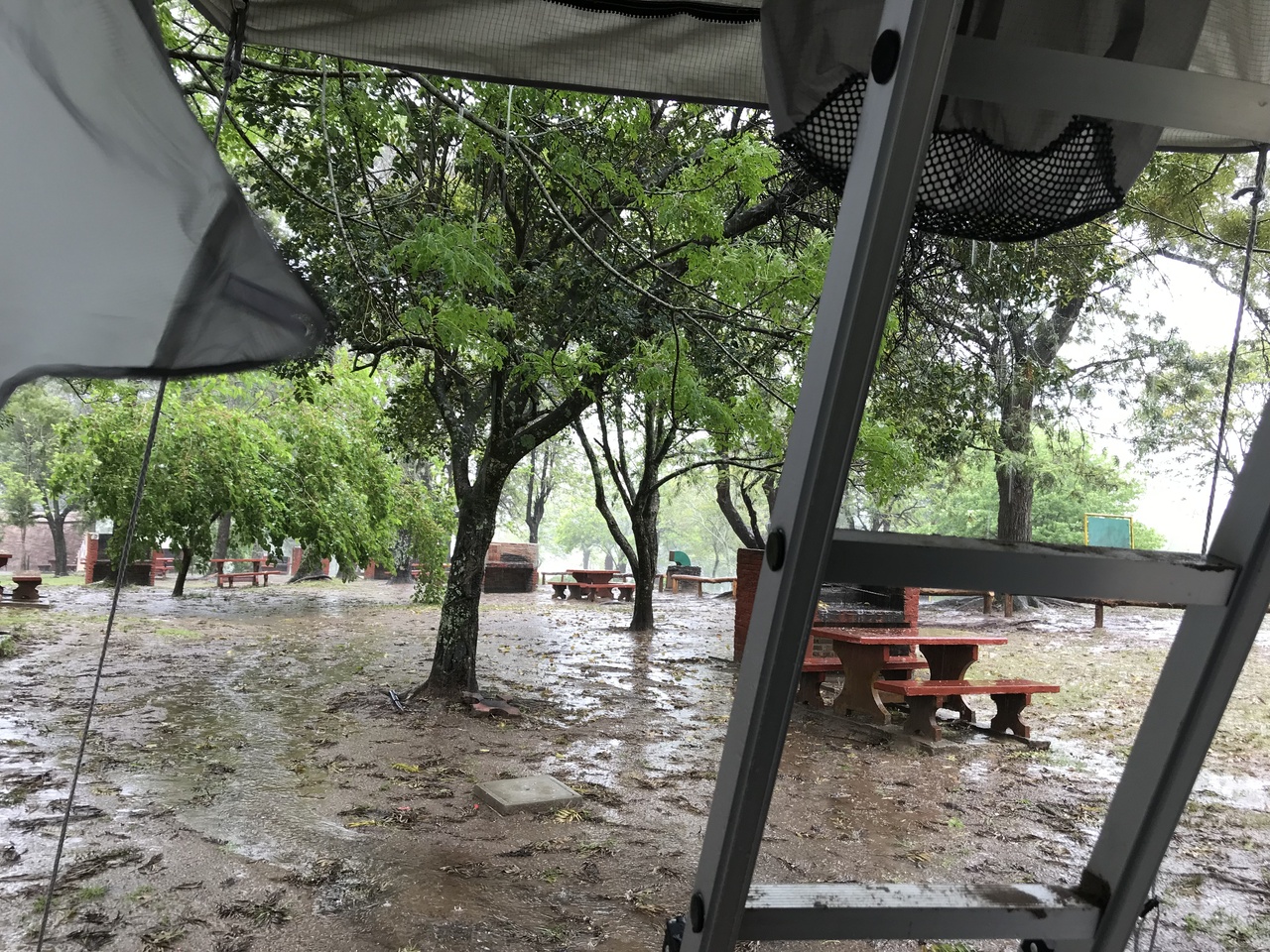
On the pampas in Argentina, there is not much shade. A tent with a light color does not get as hot as a dark one. At the same time, this light gray color does not stand out too much in the landscape. Along the Amazon in Brazil, we took advantage of mesh "protected" openings on all four sides, which still allowed us to sleep well in the humid, tropical climate.
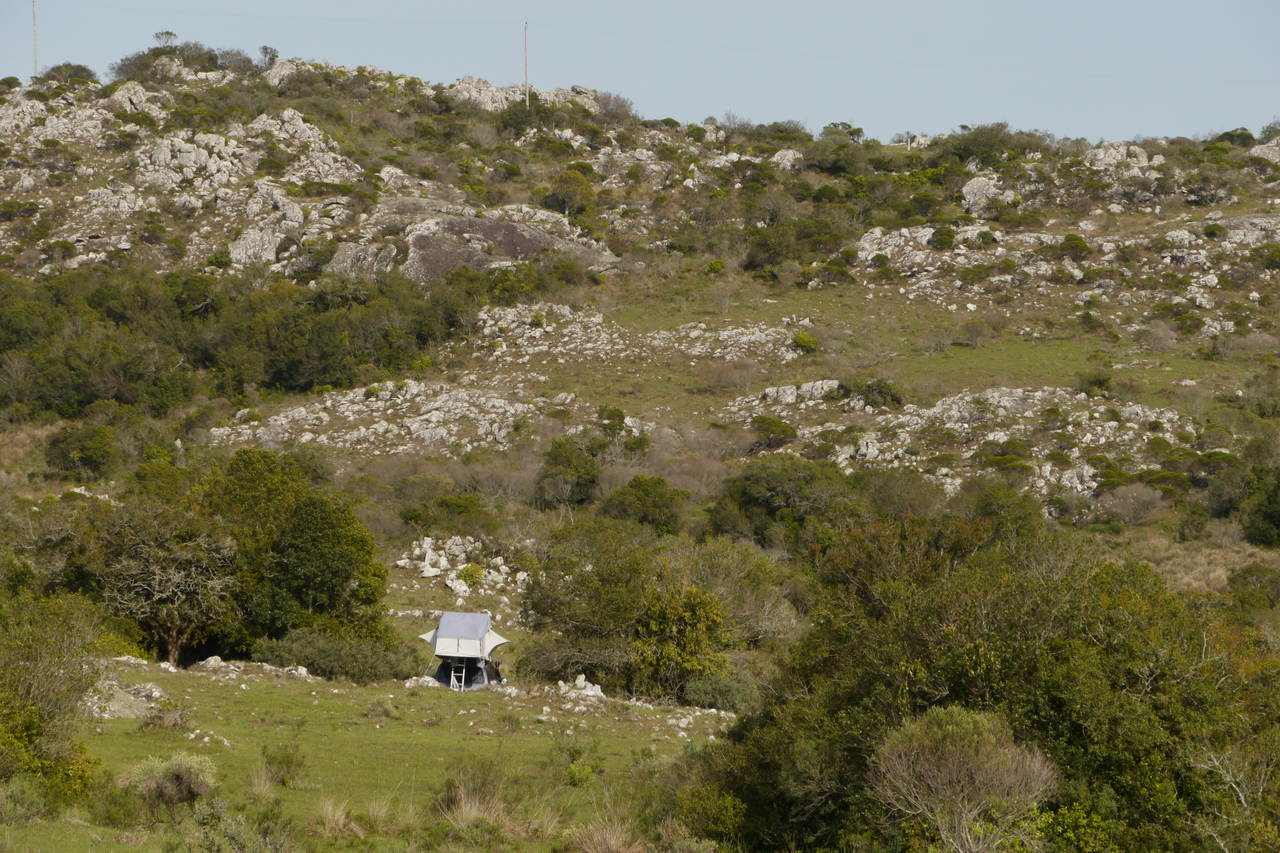
When we arrived in Mexico, we had slept in the tent for 293 nights. Mexico City is very high up: time to bring out the inner tent again. We took the opportunity of a borrowed vacuum cleaner to give everything a good cleaning. The ventilation mats under the mattresses imperceptibly did their job very well: no moisture spots, not a trace of mold under our bed!
Summer in the United States and Canada brought us no new weather conditions, apart from a nighttime hailstorm with stones the size of pigeon eggs. It scared us, but not the tent. The level of American prices was new, though. Sometimes a camping spot in the US costs more than an inexpensive hotel in Latin America. Time to combine the pleasant (of being somewhere all alone) with saving money! In the USA one is allowed to wildcamp for free in all National Forests. We slept in our tent for 238 nights in the USA and Canada.
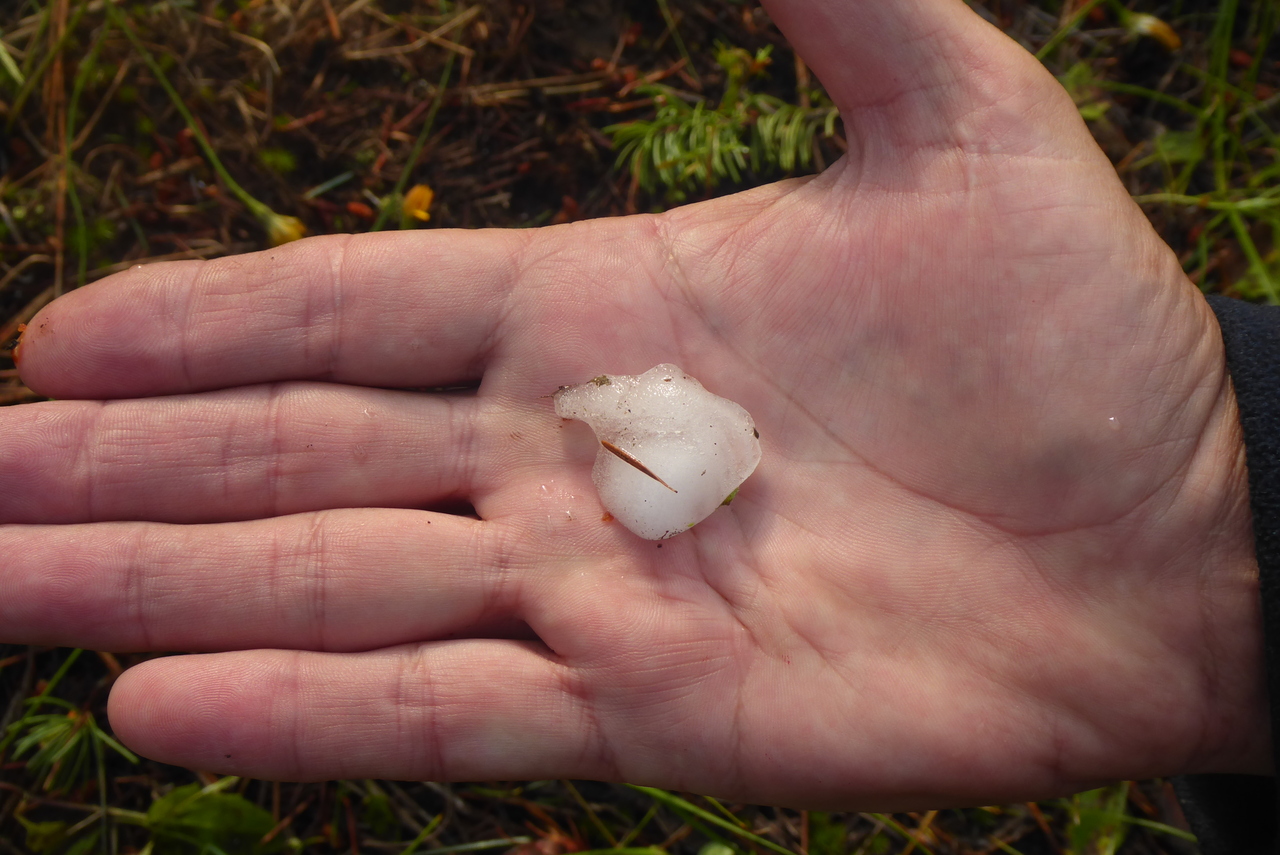
After 531 nights (consecutively that would be a year and a half) the tent has been visibly used, but it has never been necessary to take the tent completely apart for a repair (one of the items of my profile). The outer rain screen did get repaired once, but that was easy. Our trusty tent proved its function and quality and we wanted more, until...
An unpleasant surprise
Passing through Alaska and New York, we arrived with The Beast at the port near Houston, where the ship would leave for Europe. That is always a bit of a deal - leaving our driving accommodation in an anonymous port area, where a dock worker will drive the car aboard and off again upon arrival. The Beast made an empty impression: the drawers were stripped of everything organic (so the scan for drugs won't raise an unnecessary alarm), the cabin was empty (no computers to steal from the roof, like in Mexico) and our rooftop tent had been extensively dried and ventilated for the sea voyage.
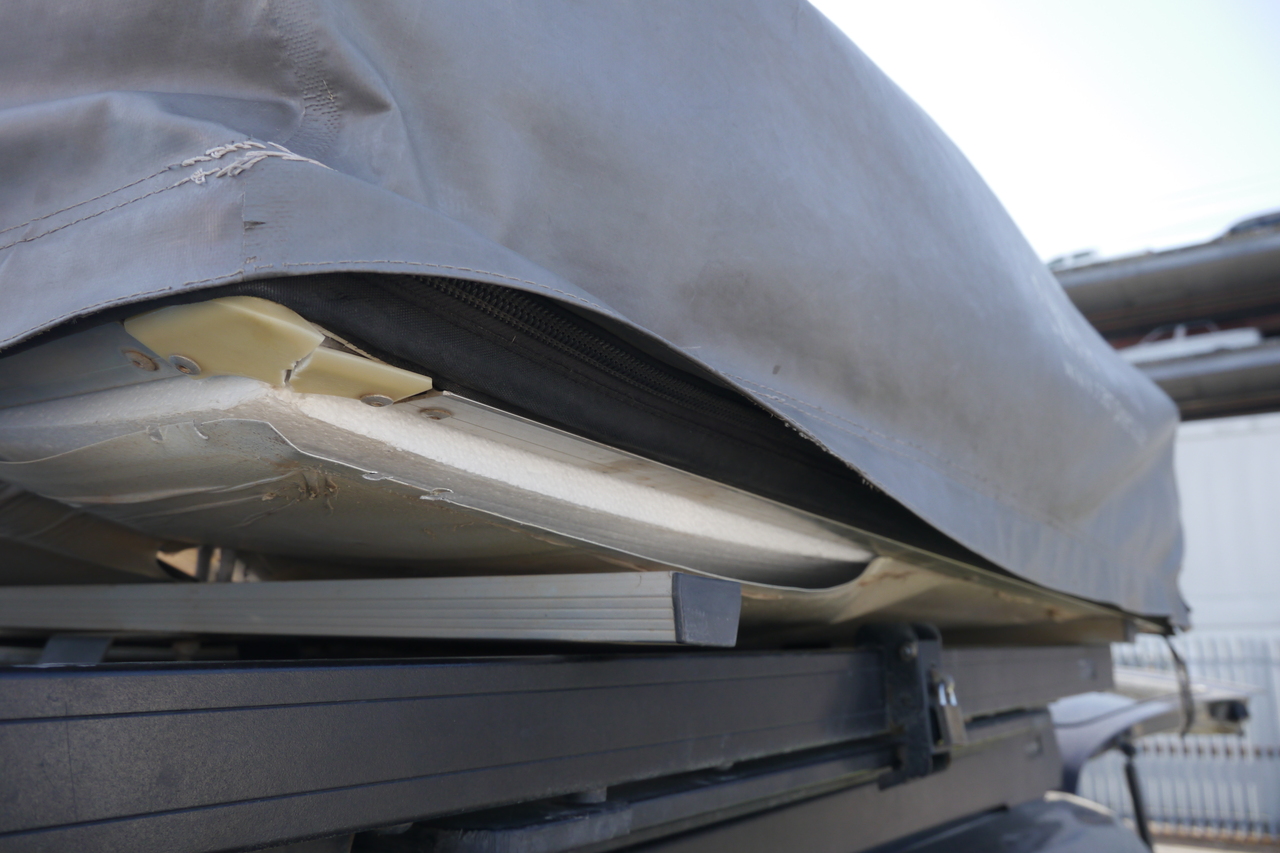
Arriving in Southampton, an unpleasant surprise awaited. 'Someone' had driven the car under something low, with considerable speed. The aluminum windshield (see photo at the top of this page) just barely went through, but our roof tent did not. Actually, there wasn't much to see outside, except that the floor had opened up (and the insulation was visible) and the outside cover was torn. We used a lashing strap to secure the tent for transport home.
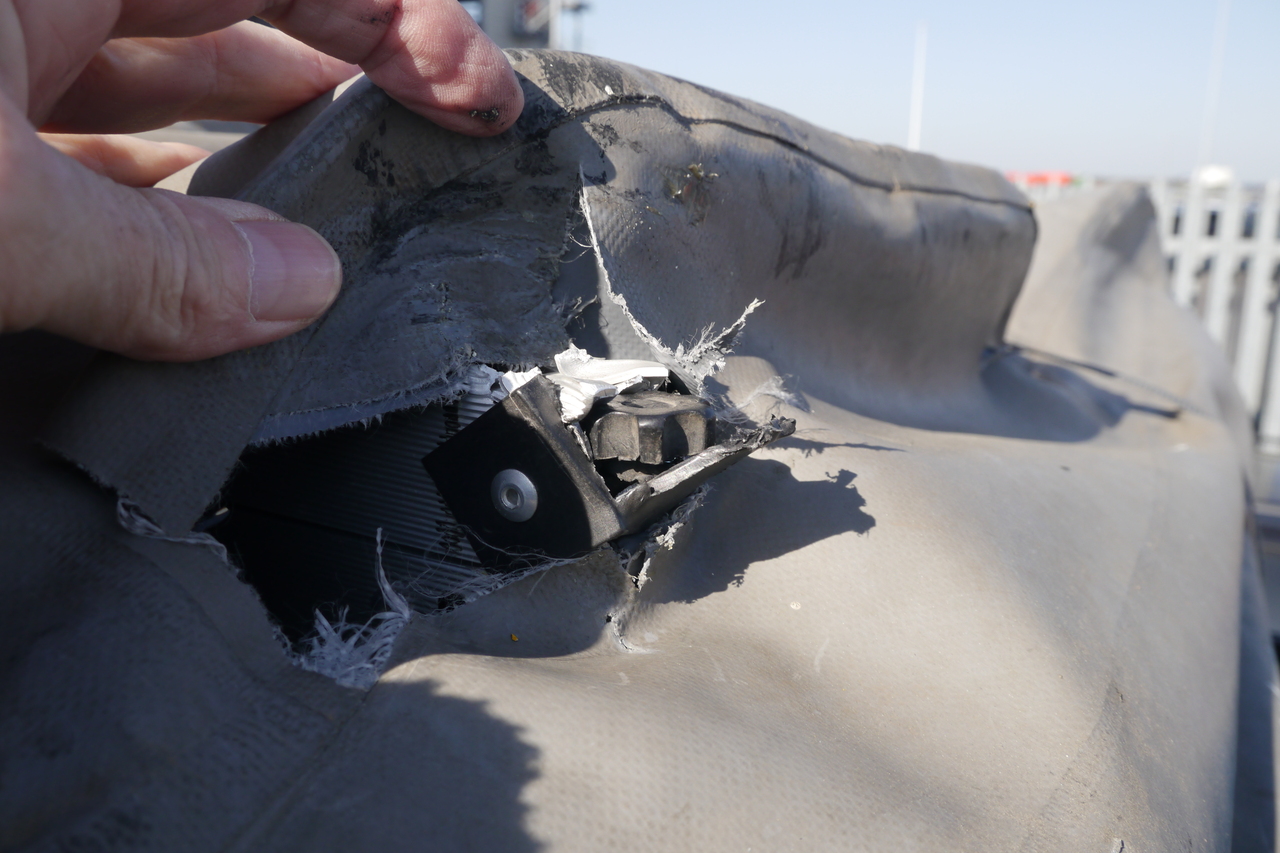
When we arrived home, we found that actually only the base plate (the fixed part attached to the roof rack), the stairs on top and the cover were broken. An in-the-bush repair would have been possible, but...
A pleasant surprise
During the 5 years the tent was part of The Beast, the people at Campwerk haven't been resting. 'Our' model of the "Campwerk Adventure" has been improved in many ways. So many things have been changed that Campwerk refers to it as the new version, as explained at the bottom of the Adventure product page (under "Innovations"). New drainage, an extra window, different side awnings and an even stronger, even lighter floor. "We'd like that too!", even if we had to say goodbye to a faithful but injured travel friend. Campwerk won us over and soon we will be traveling with a replacement brother! Thank you, faithful tent, for the protection and security you gave us for so long. We will hold you in honor. We look forward to upcoming travel adventures in a new rooftop tent - your successor!
